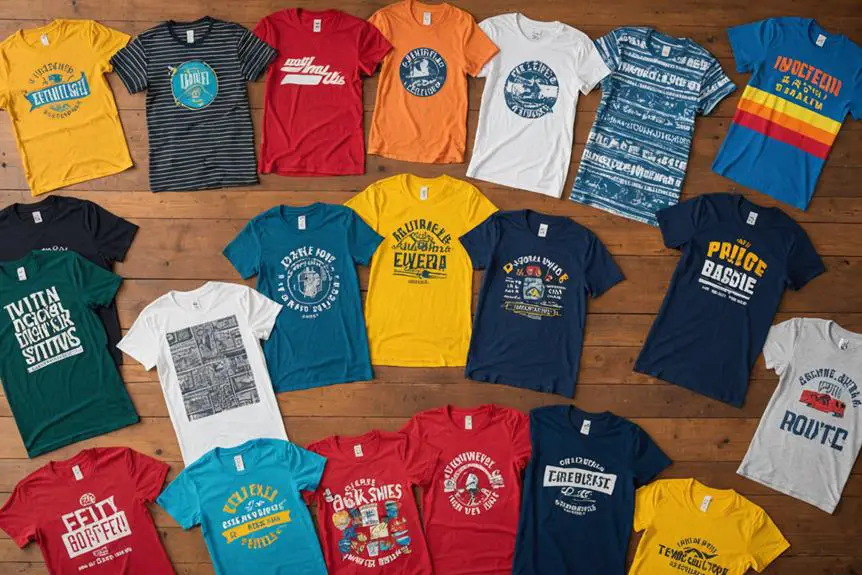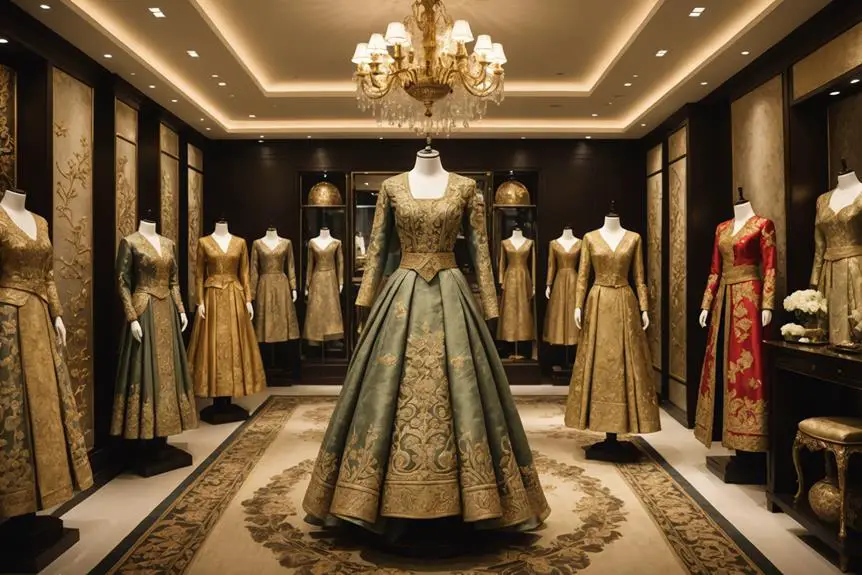The history of Escada begins with its establishment in 1978 in Munich by Margaretha and Wolfgang Ley. The brand's inaugural collection, "ESCADA – Sporty Elegance," set new standards in luxury fashion, emphasizing feminine elegance and exceptional tailoring. Escada's popularity soared, and by the late '80s, it had surpassed $100 million in sales while expanding its international presence. The brand's innovative approach to fragrance and high-profile celebrity endorsements further elevated its reputation in the fashion world. However, the 2000s brought financial challenges that tested Escada's resilience, prompting leadership changes aimed at revitalizing the brand. Today, Escada continues to be a significant player in the luxury fashion industry, appealing to style-conscious women in search of quality and elegance. The brand's ongoing journey is rich with stories waiting to be explored.
Origins of Escada
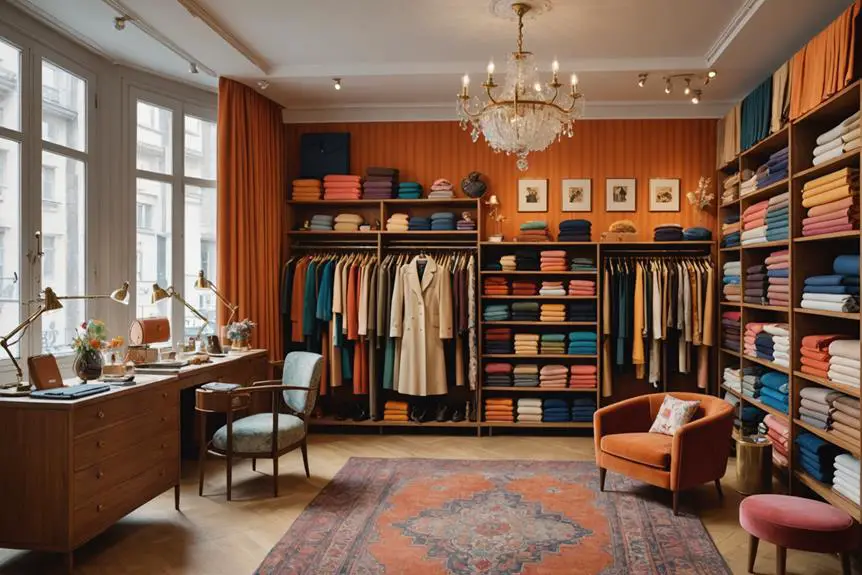
In 1978, ESCADA emerged in Munich, Germany, founded by Margaretha and Wolfgang Ley with a revolutionary vision: to democratize haute couture. Their inaugural collection, ESCADA – Sporty Elegance, set the tone for a brand that would redefine luxury fashion. Margaretha Ley's expertise as a trained seamstress allowed her to infuse quality fabrics and impeccable fit into each piece, ensuring that high fashion was accessible and appealing to a broader audience. The brand quickly became known for its imaginative designs and bold color combinations, a hallmark of its philosophy to blend comfort with sophistication, making it a favorite among fashion enthusiasts. The name "ESCADA," inspired by an Irish racing horse, reflected the ambition and success the founders aspired to achieve. Margaretha's designs were characterized by bold colors and opulent embroideries, which quickly captivated the market. One of ESCADA's standout innovations was its unique coordinate system, allowing customers to effortlessly mix and match seasonal items, enhancing versatility and personal expression in attire identifying vintage Escada logos.
This commitment to quality, style, and inclusivity positioned ESCADA not just as a luxury brand, but as a pioneer in making haute couture approachable. Together, Margaretha and Wolfgang Ley laid a foundation that would resonate through the decades, establishing ESCADA as a prominent player in the world of fashion.
Founding and Early Years
The founding and early years of Escada marked a transformative period in the fashion industry, characterized by a blend of innovation and ambition. Established in 1978 by Margaretha and Wolfgang Ley in Munich, Germany, the duo aimed to democratize haute couture. Their vision centered on creating high-quality, stylish offerings that appealed to a broader audience.
- The first collection, "ESCADA – Sporty Elegance," set a high standard for quality fabrics and workmanship.
- Margaretha Ley, drawing from her modeling background and tailoring education, infused designs with feminine elegance.
- Escada quickly gained recognition for its bold designs and intricate color combinations that captured the extroverted spirit of the 1980s.
- The innovative coordinate system allowed women to mix and match seasonal items, enhancing versatility in women's fashion.
This approach not only redefined luxury but also established Escada as a frontrunner in sophisticated women's wear. By intertwining bold aesthetics with practicality, Escada carved a niche that resonated with modern women, making an indelible mark on the fashion landscape.
Design Philosophy

Escada's design philosophy stands out for its emphasis on feminine elegance, a hallmark that has evolved yet remained consistent since its inception. Margaretha Ley, the visionary founder, expertly blended bold colors with imaginative aesthetics to capture the spirit of the 1980s. Her early designs showcased opulent embroideries and playful patterns, reflecting a commitment to both comfort and style.
Ley's tailoring education, combined with deep customer insights, allowed her to create garments that not only looked stunning but also fit comfortably, making them ideal for the modern woman. This focus on practicality is evident in the brand's innovative coordinate system, which enables you to mix and match seasonal items effortlessly, resulting in versatile wardrobe choices.
| Element | Description |
|---|---|
| Feminine Elegance | Focus on flattering silhouettes |
| Bold Colors | Vibrant hues and striking contrasts |
| Comfort | Fit and wearability |
| Imaginative Aesthetics | Creative patterns and details |
| Cool Glamour | Sophisticated yet approachable |
As Escada continues to evolve, it retains a signature blend of modern elegance and cool glamour, appealing to women for every occasion, from casual outings to glamorous red carpet events.
Expansion and Acquisitions
Building on its strong foundation of feminine elegance and innovative design, Escada commenced on a significant journey of expansion and acquisitions that would reshape its market presence. By the late 1980s, the brand had surpassed $100 million in sales, marking a pivotal moment in its financial growth. In 1989, Escada expanded internationally, establishing subsidiaries in various countries to bolster its global footprint.
- Acquired Schneeberger, a large-size dressmaker, in 1987, diversifying women's fashion offerings.
- Added to its luxury portfolio with the acquisition of Badgley Mischka in 1992.
- Launched the Escada Sport label in 1995, catering to a broader audience with trendy sportswear.
- Focused on maintaining brand values while enhancing overall market competitiveness.
These strategic moves not only enriched Escada's product range but also reinforced its commitment to luxury fashion. By broadening its portfolio, the brand adeptly positioned itself to attract diverse clientele and responded to the evolving needs of the global market. Escada's approach to expansion and acquisitions exemplifies how luxury brands can innovate and adapt, ensuring continued relevance in a competitive landscape.
Fragrance Innovations
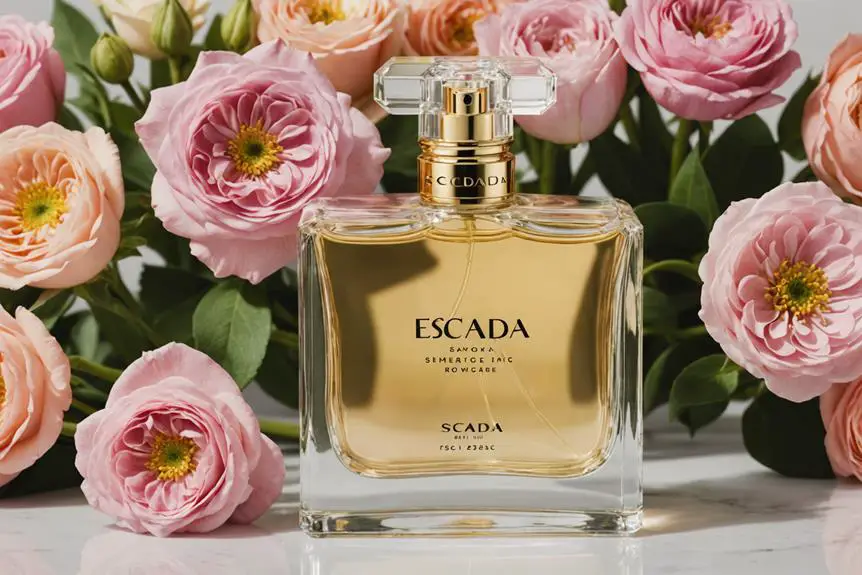
Innovation has always been at the heart of Escada's identity, particularly in the domain of fragrance. You can trace this commitment back to 1990, when Escada launched its first perfume, ESCADA Margaretha Ley, featuring a sensual heart-shaped bottle that encapsulated the essence of femininity. However, it was in 1993 that Escada truly transformed the fragrance landscape by introducing seasonal fragrances, starting with Chiffon Sorbet. This innovative approach established a successful summer fragrance line, allowing you to anticipate fresh, vibrant scents each year.
Escada's tradition of annual summer launches has since become a hallmark of its brand, reinforcing its presence in the luxury beauty sector. Signature perfumes like ESCADA MAGNETISM, ESPECIALLY ESCADA, and ESCADA CELEBRATE N.O.W. exemplify the brand's dedication to creating innovative and enchanting scents that resonate with a diverse clientele. These offerings not only enhance Escada's reputation but also cultivate a loyal customer base, enthusiastic to embrace the latest in luxury fragrances. Through these innovations, Escada continues to define its status as a leader in the world of women's fashion and beauty, enchanting you with every seasonal release.
Leadership Changes
Throughout its history, Escada has experienced notable shifts in leadership that have shaped its trajectory in the fashion and fragrance industries. These alterations often reflect the brand's response to both internal dynamics and external market pressures.
- Glenn McMahon took the helm as CEO in December 2014, focusing on revitalizing Escada during a particularly challenging period.
- Niall Sloan joined as Global Design Director in June 2017, promising to inject fresh perspectives into the brand's creative direction.
- Daniel Wingate's tenure as Creative Director began in 2014 but ended in 2017, illustrating the rapid changes in leadership.
- Bruno Sälzer's departure in February 2014 marked a significant shift, as the company grappled with financial challenges.
Each of these leadership changes has been pivotal, influencing not just the brand's creative vision but also its strategic direction. As you consider these alterations, it's clear that the ongoing evolution of leadership at Escada reflects a broader narrative of adaptation and resilience in the competitive fashion landscape. The combination of new ideas and approaches aims to guarantee that Escada remains relevant and appealing to modern consumers while addressing past challenges.
Financial Challenges
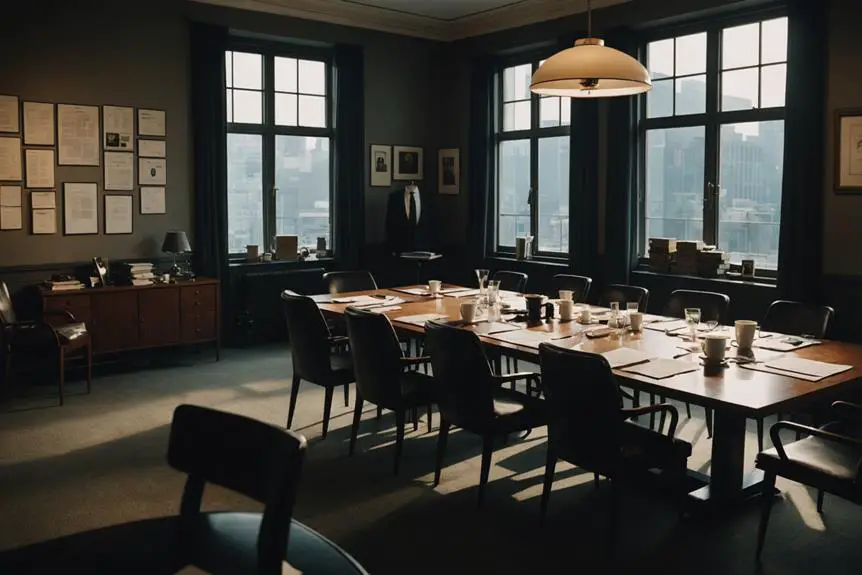
Escada's financial challenges have become increasingly pronounced, culminating in its September 2020 insolvency filing in Germany. This situation arose from ongoing financial stress and a series of declining sales that plagued the brand. Despite previous restructuring efforts aimed at stabilizing the company, these initiatives ultimately failed to curb the downward trend.
Escada faced intensified competition in the luxury fashion market, which further strained its financial viability. The brand's public image suffered considerably due to a 1994 lawsuit alleging wrongful termination and derogatory comments against former CEO Wolfgang Ley, casting a shadow over its reputation. In a bid to recover, Escada made a commitment to go fur-free by 2011, working to improve its public image in light of ongoing controversies and consumer activism.
However, these efforts weren't enough to offset the impact of increased competition and persistent financial difficulties. As Escada navigated these turbulent waters, the combination of a tarnished public image and a challenging market landscape ultimately led to its insolvency, showcasing the fragility of even established luxury brands in a rapidly evolving fashion environment.
Notable Clients and Collaborations
Notable clients and collaborations have played a pivotal role in shaping Escada's identity within the luxury fashion landscape. By aligning itself with high-profile figures, the brand has enhanced its prestige and visibility.
- Diana, Princess of Wales, wore an Escada gown during a formal visit to Berlin in 1987, leaving a lasting impression of elegance.
- Kim Basinger showcased Escada's allure by donning one of its gowns when she received an Oscar in 1998, linking the brand to significant cultural moments.
- Crown Princess Victoria of Sweden consistently selects Escada for royal appearances, further solidifying its status as a luxury brand favored by royalty.
- In 2019, Rita Ora was appointed as brand ambassador, leading to a collaboration that produced an exclusive bag design, demonstrating Escada's contemporary appeal.
These collaborations and celebrity endorsements have not only elevated Escada's image but also strategically positioned the brand within the competitive fashion industry. By leveraging the influence of notable clients, Escada has crafted a narrative that resonates with luxury and sophistication, ensuring its relevance across generations.
Current Status and Market Position
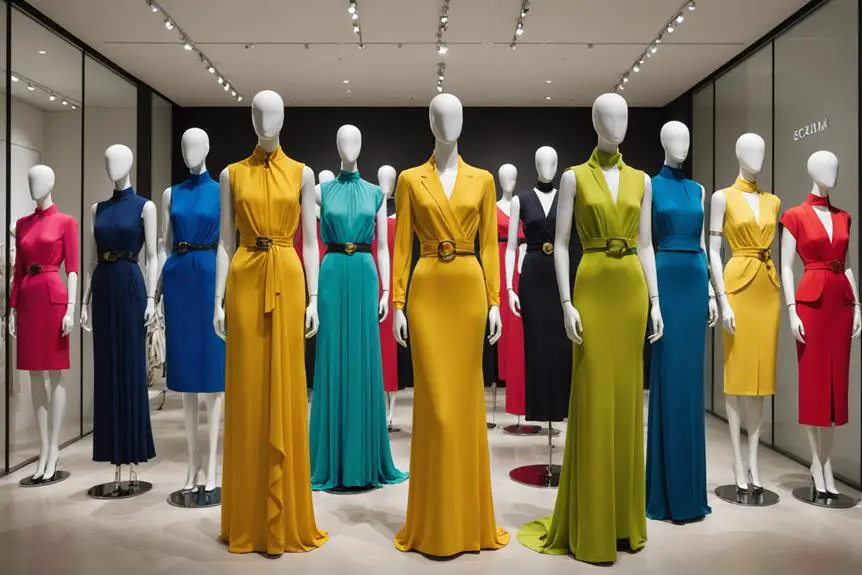
As of 2023, Escada stands as a prominent player in the luxury fashion sector, operating from its New York headquarters and boasting a presence in 24 countries with around 1,100 sales outlets worldwide. Recognized as one of Germany's leading luxury fashion labels, Escada competes fiercely against high-end brands like Steven Alan and prAna, continually innovating in contemporary fashion while upholding its heritage of elegance.
The brand targets fashion-forward women who appreciate high-quality materials and craftsmanship. This commitment to luxury and modern femininity defines Escada's market position. Despite facing financial challenges and undergoing restructuring efforts in recent years, the company remains steadfast in its mission to enhance brand visibility and market presence.
Escada achieves this through strategic collaborations that attract attention and elevate its seasonal collections, ensuring that the brand stays relevant in a competitive landscape. By focusing on both tradition and innovation, Escada not only maintains its status but also works to expand its influence in the luxury market. Your understanding of Escada's current status will help you appreciate its resilience and adaptability in these challenging times.
Product Lines and Offerings
Offering a diverse range of fashion products, Escada caters to various aspects of a modern woman's wardrobe while maintaining its signature elegance. The brand's offerings are thoughtfully segmented into different lines, each designed to meet specific needs without compromising on style or quality.
- ESCADA Mainline: Sophisticated ready-to-wear and made-to-order garments ideal for professional settings.
- ESCADA Sport: Casual wardrobe essentials that prioritize comfort and are perfect for leisure and travel.
- ESCADA Eyewear: Stylish frames and sunglasses, produced in collaboration with DeRigo, featuring two seasonal collections annually.
- ESCADA Jewelry & Watches: Exquisite pieces crafted from fine materials, showcasing intricate designs and also releasing two seasonal collections each year.
Additionally, the ESCADA Girls line focuses on high-quality children's clothing, mirroring the adult lines with its emphasis on craftsmanship and seasonal collections. Each of these product lines reflects Escada's commitment to quality, offering you versatile options that suit both casual outings and formal occasions. By diversifying its offerings, Escada guarantees that you can find the perfect piece, whatever the occasion may be.
Frequently Asked Questions
What Happened to the ESCADA Brand?
Escada faced significant financial difficulties, leading to insolvency in 2020. Declining sales, market competition, and past controversies exacerbated its struggles. Yet, it still aims to thrive in the luxury women's fashion sector globally.
Who Owns ESCADA Now?
You'll find that Escada is currently owned by Regent LP, a private equity firm. They acquired the brand in 2021, focusing on revitalizing its market presence and enhancing product offerings amid previous financial challenges.
Is ESCADA a Luxury Brand?
Yes, Escada is a luxury brand. You'll find its elegant designs and high-quality craftsmanship appealing, along with its seasonal collections and signature fragrances, which embody modern femininity, sophistication, and exclusivity sought after by fashion-forward women.
When Did ESCADA Perfume Come Out?
Escada introduced its first perfume, ESCADA Margaretha Ley, in 1990. This launch not only marked its entry into the fragrance market but also set the foundation for the brand's future seasonal and signature scents.


